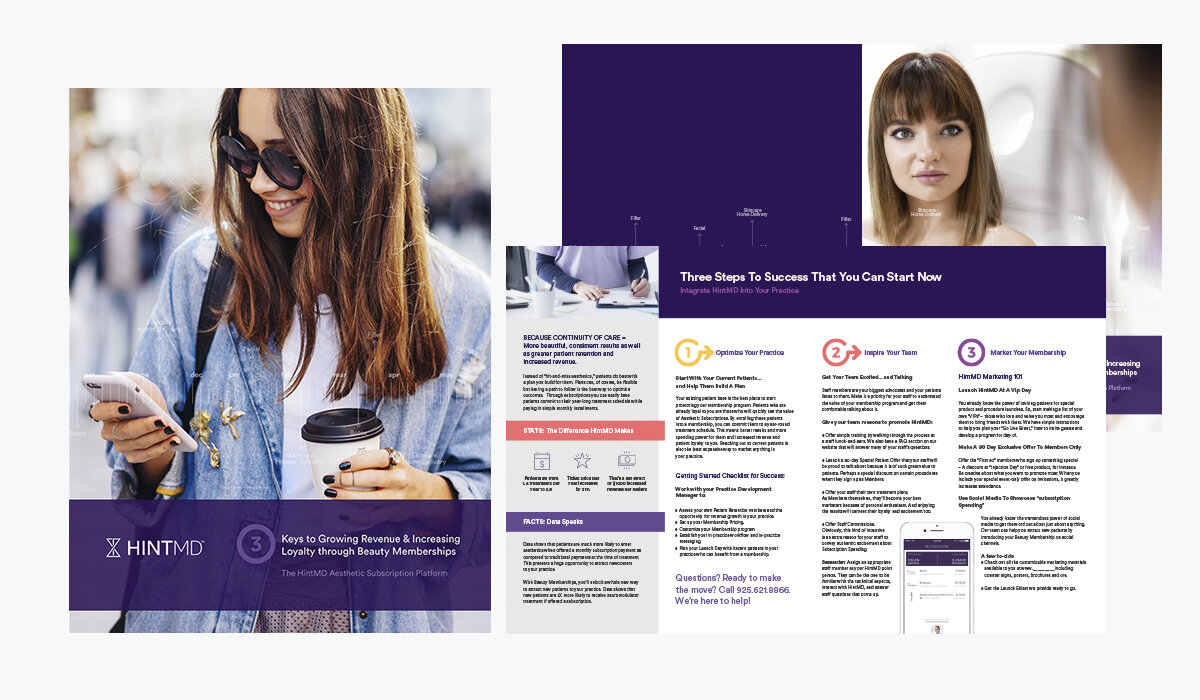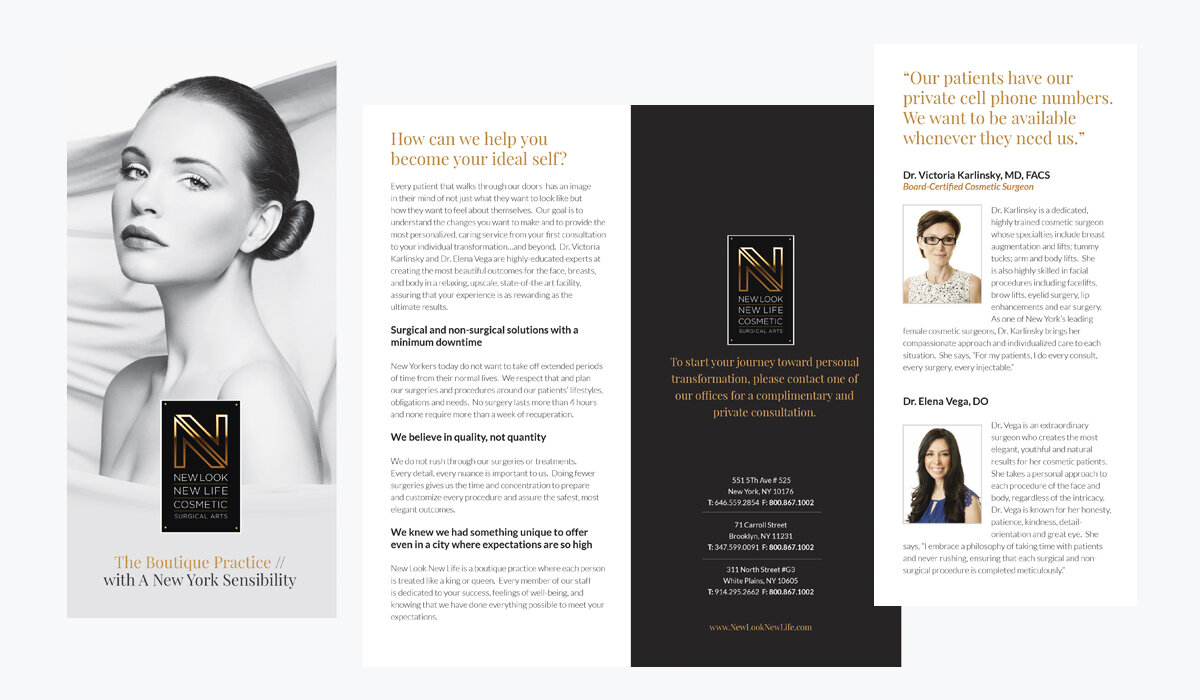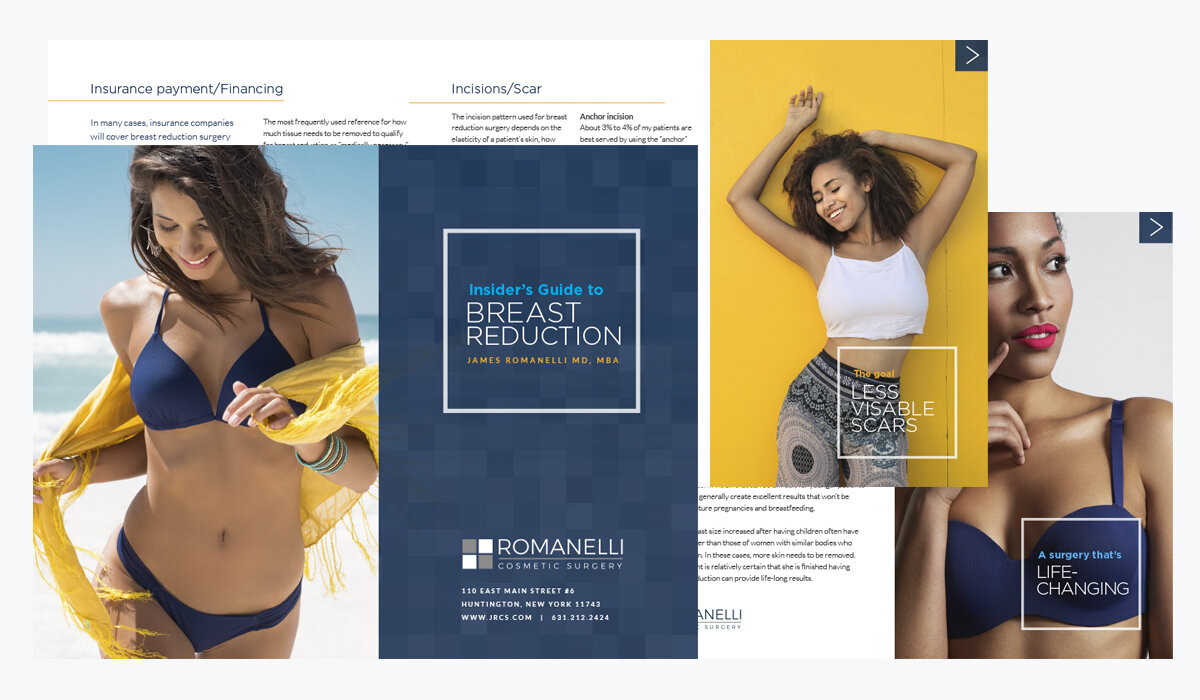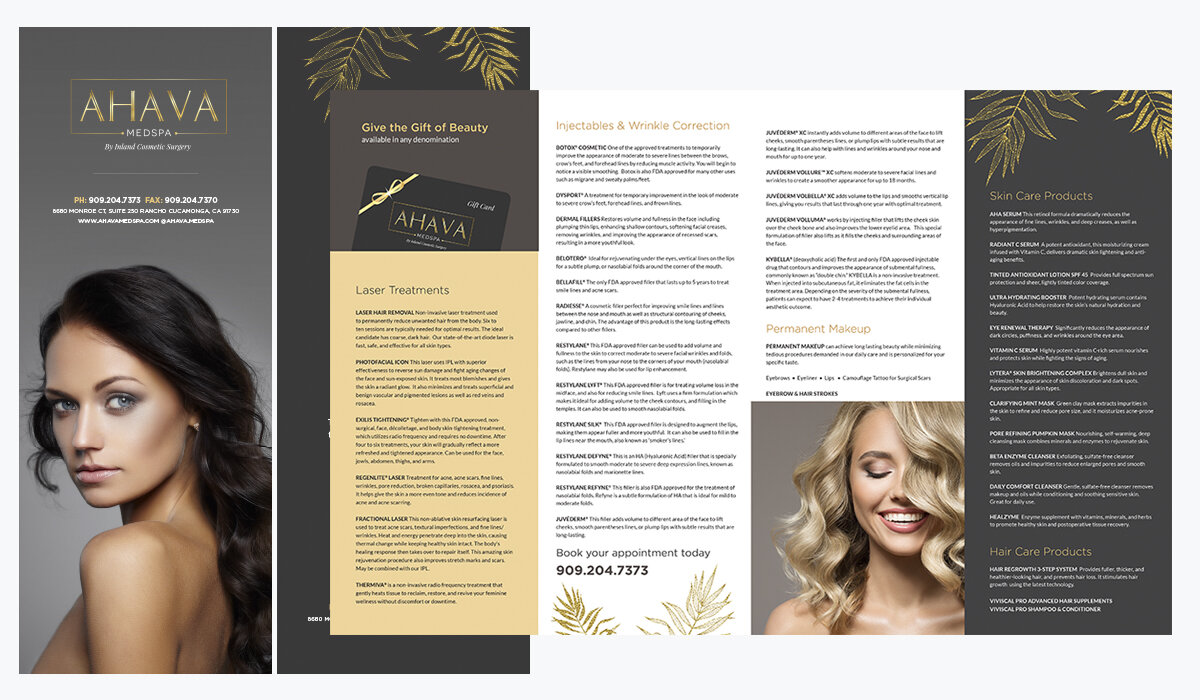
graphic design and content creation
graphic design and content that delivers
Graphic design is a powerful form of communication that blends art and technology to convey ideas, information, and emotions visually. It plays a crucial role in branding, marketing, and digital media, influencing how audiences perceive and interact with a brand or message. Whether it’s creating logos, websites, packaging, or social media graphics, graphic design is at the heart of visual storytelling in today’s digital age.
brochures + flyers
Print materials hold an important role in a company’s marketing mix. Although your website is the most important marketing tool, brochures and flyers are lasting reminders of your business and what you have to offer. Written and designed well, these are essential to your success.
Email & social marketing
Regular eblasts have proven to generate a lot of revenue for our clients. Keeping in front of your customers, making special offers, providing information and announcements, or inviting them to events is a very smart (and effective) component of your marketing efforts.
Magazine + newspaper ads
Print advertising has power. You can set yourself apart, clearly communicate your unique products or services, and make special offers. Print advertising can be a cost-effective way to reach your target audience in a very engaging and specific way.

Small Business graphic Design + Content
Modern, sophisticated design and written content must have the ring of truth about it and understand and cater to the needs and challenges of your target market.
The Core Elements of Graphic DesigN
Typography: Typography is the art of arranging type to make written language legible, readable, and visually appealing. In graphic design, typography involves selecting fonts, sizes, spacing, and colors to create text that enhances the overall design and communicates the intended message effectively. The choice of typefaces and how they are combined can set the tone of the design, whether it’s formal, playful, or modern.
Color Theory: Color is a fundamental element in graphic design, affecting both aesthetics and functionality. Understanding color theory—the relationship between colors and their psychological effects—is essential for creating visually harmonious designs. Designers use color to evoke emotions, create contrast, and guide the viewer’s attention. The strategic use of color can also reinforce branding by creating a consistent visual identity across all media.
Composition and Layout: Composition refers to the arrangement of visual elements in a design. A well-balanced layout guides the viewer’s eye through the content in a logical and engaging way. Designers use principles like alignment, contrast, proximity, and white space to create layouts that are both aesthetically pleasing and functional. Good composition ensures that the design is not only attractive but also effective in delivering the intended message.
Imagery: Imagery, including photography, illustrations, and icons, plays a crucial role in graphic design by adding visual interest and helping to convey complex ideas quickly. High-quality images can make a design more engaging and memorable. In the digital era, designers often use stock photos, custom illustrations, or a combination of both to create compelling visuals that support the overall design concept.
Branding: Graphic design is integral to branding, as it shapes the visual identity of a brand. This includes creating logos, choosing brand colors, and designing business cards, brochures, and other marketing materials. Consistent use of these elements across all platforms ensures that the brand is easily recognizable and leaves a lasting impression. A strong visual identity differentiates a brand from its competitors and helps build trust and loyalty with customers.
In conclusion, graphic design is an ever-evolving field that requires a balance of creativity, technical skills, and an understanding of visual communication. Whether it’s building a brand identity, designing a website, or creating social media content, graphic design is essential for making a lasting impact and connecting with audiences on a visual level.
some of our recent work
The Role of Graphic Design in Digital Media
Web Design: In the digital age, graphic design extends to the creation of websites that are not only visually appealing but also user-friendly and responsive. Web design involves the integration of layout, color schemes, typography, and imagery to create a seamless user experience. Designers must consider factors like loading speed, mobile compatibility, and navigation to ensure that the website is functional and accessible on all devices.
Social Media Graphics: Social media platforms are highly visual, making graphic design essential for creating engaging content. From Instagram posts to Facebook banners, well-designed graphics can boost engagement and help messages stand out in crowded feeds. Graphic designers create social media templates, infographics, and animated content that align with a brand’s identity and appeal to its target audience.
User Interface (UI) and User Experience (UX) Design: UI and UX design are specialized areas within graphic design focused on optimizing the interaction between users and digital products. UI design involves creating visually appealing interfaces that are intuitive and easy to navigate, while UX design focuses on enhancing the overall experience by improving usability and functionality. Together, UI and UX design ensure that digital products, such as websites and mobile apps, are not only beautiful but also effective and enjoyable to use.
Motion Graphics: Motion graphics are animated visual elements that are increasingly used in digital media to capture attention and convey information dynamically. They are used in video marketing, explainer videos, and digital ads to make content more engaging and memorable. Graphic designers use software like Adobe After Effects to create animations that enhance storytelling and make complex ideas easier to understand.




















